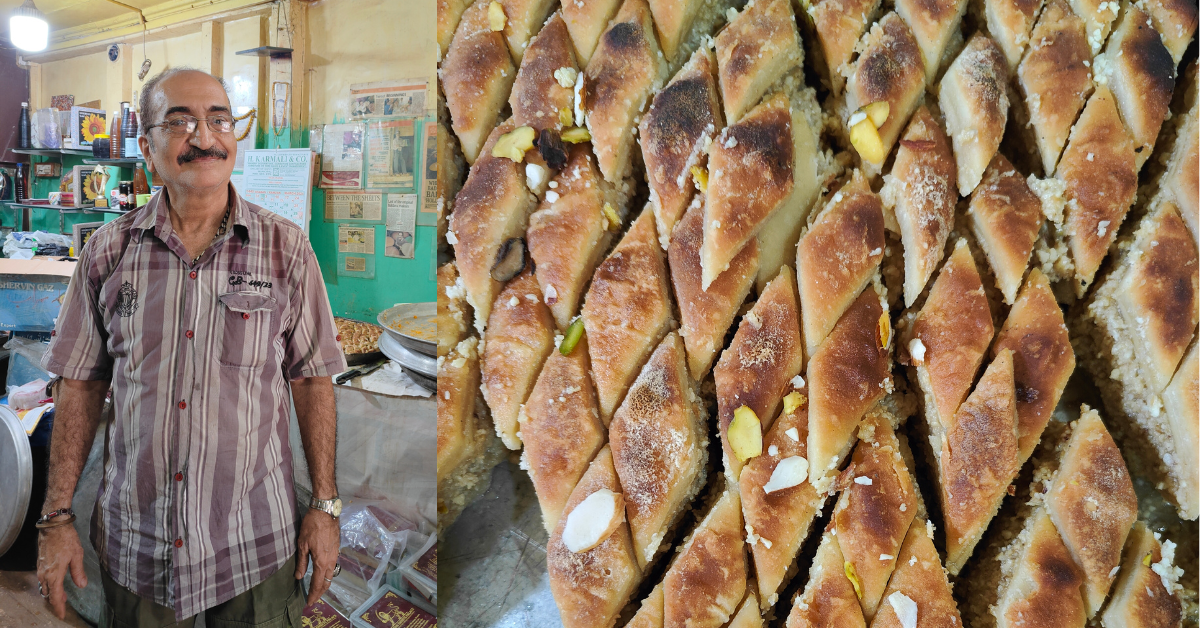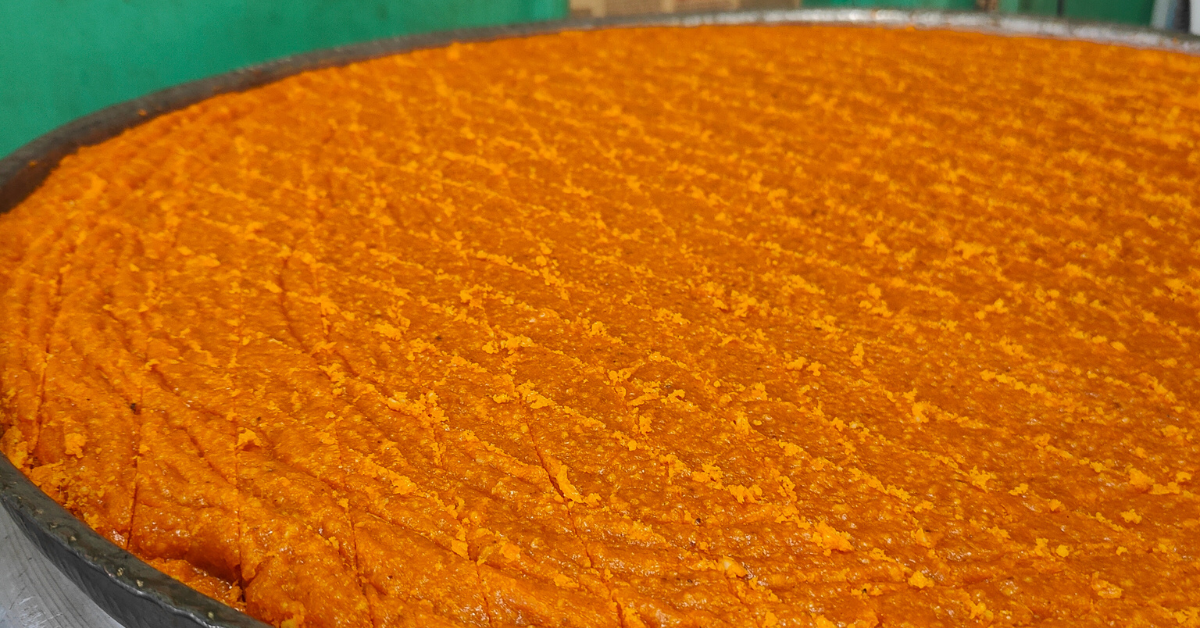
How do you preserve your culture away from your homeland? Through food. It might seem trivial, but food is a key aspect of culture. Food tells you history, geography, and socio-economic conditions, and it’s also extremely political. But on a lighter note, it’s a gateway into experiencing a culture that’s different than your own. Food is also Hassan Irani’s solution is to keep running his grandfather’s shop, Iranian Sweets Palace in Bhendi Bazaar.
Almost 114 years ago, Irani’s grandfather bought a shop space on Imamwada Road, just off Mohammed Ali Road, for ₹30. Today, the store front opens for fewer days than when it first began. But it’s still preserving the recipes it began with.
Irani opens shop for two to three weeks only right before Navroze, the Iranian New Year. “I don’t do this for the money,” he says. “For me, it’s just a way to preserve my culture.” And, you can see that resonate in the store’s offerings. While the shop keeps you placed in Mumbai, the shelves stacked with rose sherbet bottles, large containers of tahini, and Gaz with labels of ‘Made in Iran’ will have you wondering where you are.
For many elder Mumbaikars, this space isn’t new. In fact, Irani has received so much media coverage that 10 years after I first met him, he still has not changed. Extremely unawed by media attention, he worryingly asks, “You want me to speak to you during my peak customer hours?” when I tell him I have a few questions for an article I am writing. But Irani’s story is plastered on the walls of his shop. A large flex featuring him in Mid-Day years ago is taped on the door, laminated prints from various newspapers talking about Irani and his iconic baklava are pasted on the walls. And, I even spot a printout of a story I had written—almost 10 years ago—in a corner. Ironically, you won’t find this story nor the website I wrote it for on the web anymore. But it’s cemented in time, quite like Irani’s shop.
As several photos of a young Hassan Irani from several articles stare back at me, I realise that I know his story as if it’s my own. It’s the story of Mumbai’s countless community-driven businesses. And no matter how repetitive, it’s important to talk about.
Iranian Sweets Palace is legendary. Not in the sense that today’s doom-scrolling kids know all about it. But it’s a legendary food story several Mumbaikars know of, and even more Iranians in Mumbai consume. This year too, when the Irani and Parsi communities in Mumbai gather around their dinner tables, they will find this old confectioner’s baklava on it.
What’s in a baklava?
But what’s so great about this baklava? It’s wood-fired.
If you have eaten food cooked on a chullah or a wood-fire, you are aware of how different it tastes from a gas stove. The chullah-cooked food is smokier, and almost tastes more earthy. This flavour is also what sets apart Irani’s baklava recipe, which is touted as the only traditional Persian one you will find in Mumbai. A bite in and you’ll be able to savour warm spices, lots of pista, a dense pastry that’s unlike the other baklava made with phyllo. It’s finished with a drizzle of honey.

Louz Zaffran at Iranian Sweets Palace
If a Persian baklava does not entice you, Irani also cooks traditional sweets like the Louz Zaffran (saffron), and Louz Pista (pistachios). The word Louz (La-ooz) refers to the diamond shape that the sweets are cut into. At Iranian Sweets Palace, you will find many large copper thals in which the sweets have been made, set, and cut. Just like the baklava, these too are cooked on wood-fire. The flavour is quite like an Indian barfi, except you will get a hint of cinnamon and cardamom indicating the heavy use of spices compared to its Indian counterpart. The texture, though, is unlike a barfi, it’s richer in fat and more crumbly too.
Among other offerings you will find on the store’s shelves stacked with Gulab Sherbet, Gulab Jal, Gaz (a nougat-like sweet). Irani opens a fridge at the back to show me items like white mulberries, which grow only in two countries one of them being Iran. He takes out of a bag of dried camel milk cheese and gives me a small crumb to taste, “It’s very expensive, but have a taste. We soak it in water and then eat it like any other cheese.” There are also other dry fruits that you will find commonly in India as well, but the stock here is brought in from Iran. And then, of course, there are Zereshk (Barberries), which are used in Berry Pulav; A Pomegranate papad (similar to aam papad), another item that is only made in Iran.
You can head to the store to shop and taste the array of Iranian offerings. And, when it’s not Navroze, call Irani for a special order (minimum 2kg) and have it catered to you.

